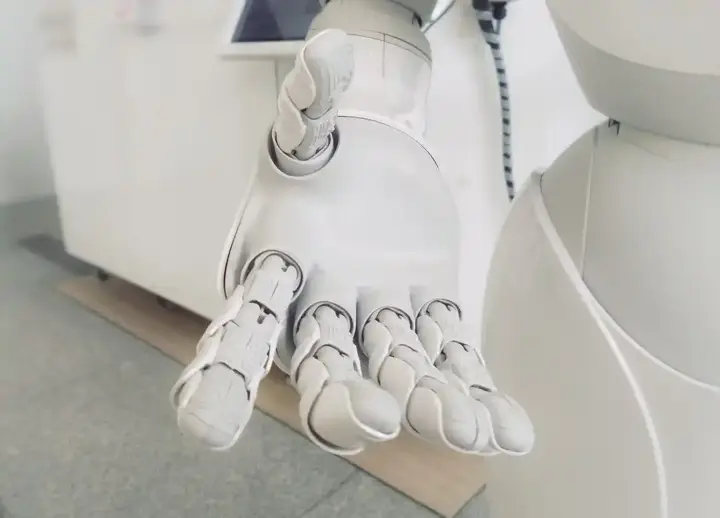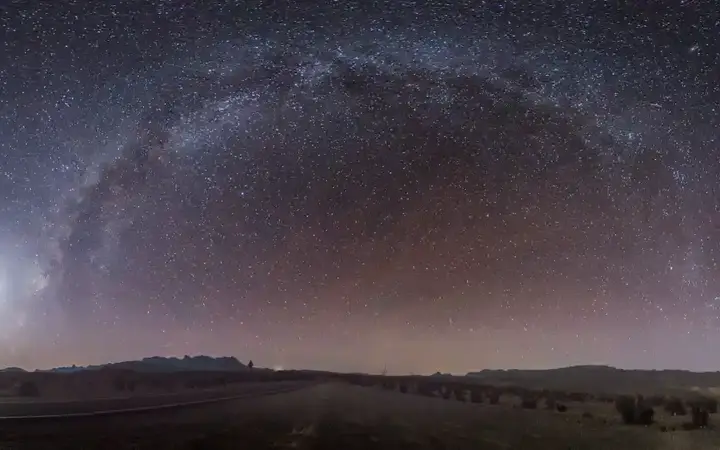What is deepfakes? And is it possible to know it?
Deepfakes is a sophisticated artificial intelligence technology that enables the installation of fake digital content very realistically. Simply put, this technology allows someone's face or voice to be integrated into another video or photo, so that they can place someone's face on someone else's body, making it appear as if they are saying or doing things they haven't already said or done.
How does deepfakes work?

Deepfakes technology is based on deep-learning algorithms called variable property networks. These networks train on vast amounts of data, such as videos or photos, to learn how to relate facial features and a person's voice expressions and expressions.
Once the network is trained, it can be used to create new videos or photos that look like real ones. This is done by replacing the facial features of the target person in a real video or photo with their features from another video or photo. It's as if a person is doing things he hasn't done, or saying things he hasn't spoken.
Recommend
Applications
Deepfakes technology is used in several areas, including:
Entertainment: Can be used to create funny videos or to change the appearance of actors in movies. They are generally used to create new entertainment content, such as fantasy movies and series, or to integrate actors from different eras into the same scene.
Media: To present news or press reports more attractively, or to create fake interviews with celebrities. This has already happened, with multiple media outlets, but it has been noted.
Education: Can be used to create interactive educational content or to explain complex concepts in a simplified way. Or to create interactive learning experiences.
Business: Can be used to create interactive presentations or to create real-life models for new products. Also to promote products and services, or to create attractive ads.
Adverse effects and risks

Despite its benefits, deepfakes raise significant ethical concerns, as it can be used to:
Spreading fake news: They can be used to create fake videos showing people saying or doing things they didn't do, which can lead to misinformation and discredit. The biggest example of this is by creating videos showing famous people saying things they didn't say, or promoting misleading ideas.
Blackmail: They can be used to create fake videos showing people in embarrassing situations, which may be used to blackmail or pressure them.
Defamation of people: by creating photos and videos that show them in embarrassing or abusive situations.
Impact on elections: They can be used to create fake videos showing political candidates saying things they didn't say, which can affect election results. By manipulating voters' opinions by spreading misleading or false information.
How to distinguish fake content

With the development of deepfakes, it has become difficult to distinguish fake content from real content.
However, there are some signs that can help you detect fake content, such as:
Inconsistency of facial movements with sound: The person's lip movements in the video may seem inconsistent with what they say.
Flicker or vibration in the image: Some poor techniques may show signs of shaking or flickering in the image, especially around the edges of the face.
Lack of natural facial expressions: A person's facial expressions in the video may look unnatural or exaggerated.
Incorrect information: It is important to verify the information provided in the video from reliable sources.
Unexpected or illogical content.
What is the future of deepfakes?

Deepfakes technology is expected to continue to evolve, which may pose greater challenges in distinguishing real content from fake content.
Many companies specialized in the content industry have created software that helps identify fake content, however, there are people who seek to develop such technology for often obscene goals. We've seen this especially with dirty online content creators.
Therefore, it is important to be aware of this technology and its risks, and to learn how to assess the reliability of information before sharing or publishing it. It is important to raise awareness about these risks, develop new techniques to detect fake content, and promote media literacy to help distinguish reliable information from misleading ones.
![]()
Creativity without borders: practical ideas to develop your creative skills
Creativity lives in all of us—it's not a gift for the few, but a skill we can all grow. With the right habits, fresh experiences, and a supportive environment, we can overcome fear and routine to unlock ideas that spark innovation and make life more exciting and meaningful. more- ADVERTISEMENT
![]()
Success Guide - How to tame anxiety, stress and work stress?
Feeling overwhelmed by anxiety, stress, or work pressure? This simple guide offers practical steps like deep breathing, walking, quality sleep, setting boundaries, and staying organized to help you cope and regain balance. Remember, small changes can make a big difference—and you're not alone. more- ADVERTISEMENT
![]()
Sacred places in the Andes: 7 secrets of Machu Picchu
Machu Picchu isn't truly the lost city of the Incas, and it's not as forgotten as once believed—locals were living there when rediscovered. Many marvels are hidden underground, and if you're up for a sweaty climb, you can skip the pricey bus and enjoy epic views for free. more- ADVERTISEMENT
![]()
How can I stop wasting time?
Distractions like phones and social media eat up your time. Create routines, set priorities, and work in focused time blocks. Keep your phone silent, avoid multitasking, and believe in yourself to overcome procrastination. Small changes can make your days much more productive. more- ADVERTISEMENT
![]()
3 inspiring success stories in difficult times
Fred DeLuca’s journey from washing dishes to founding Subway proves that persistence can turn a simple idea into a global empire, while Steve Jobs and Paulo Coelho show how resilience in the face of setbacks can lead to world-changing success and creative brilliance. more- ADVERTISEMENT
![]()
Moon Magic: How the Lunar Influence Shapes Earth's Tides
The moon's magical pull creates amazing tides that shape our coasts and marine life. From fishing to clean energy, humans have long benefited from this natural rhythm. The moon's gravity isn't the only driver—factors like geography, wind, and the sun also play a big part in this fascinating phenomenon. more- ADVERTISEMENT
![]()
Moving forward still represents progress: trusting the process and taking my own best advice
Moving forward still represents progress: trusting the process and taking my own best advice more- ADVERTISEMENT
![]()
Breaking the code of learning: does repetition really help?
Rote memorization—repeating facts to remember them—can help with basics like math tables or alphabets, especially in kids. But it’s often boring, lacks understanding, and doesn’t help apply knowledge in real life. While it boosts memory short-term, deeper learning methods work better for long-term success. more- ADVERTISEMENT
![]()
Negotiation skills for successful personal and practical relationships
Negotiation isn’t just for business or politics—it’s a vital life skill. It’s about finding win-win outcomes using communication, persuasion, and emotional intelligence. Whether you're a parent, partner, or student, mastering this skill strengthens relationships and helps navigate daily challenges with understanding, planning, and strategic thinking. more- ADVERTISEMENT
![]()
Seeds of "dandelion" interstellar
Seeds from An Interstellar “Dandelion” more- ADVERTISEMENT





















